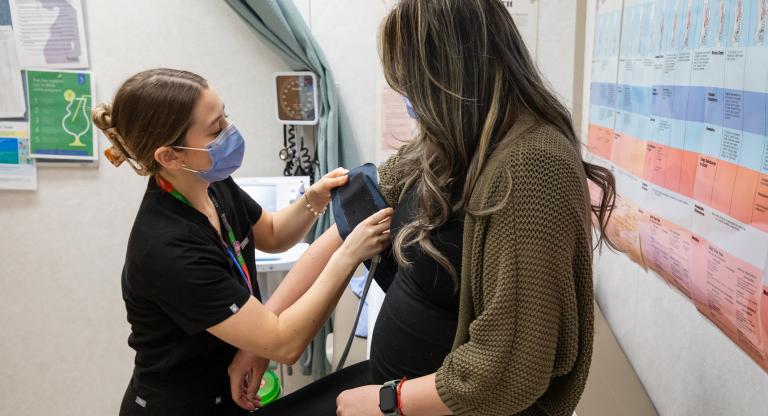New study shows improved care for pregnant patients with type 1 diabetes

Half of babies born to women with type 1 diabetes have complications related to high blood sugar, but a new international study is the first to show that continuous glucose monitoring can help pregnant women have improved blood sugar levels and healthier newborn babies.
The study was recently published in the prestigious medical journal, The Lancet, and was co-led by Dr. Denice Feig, endocrinologist and head of the Diabetes in Pregnancy program at Mount Sinai Hospital’s Leadership Sinai Centre for Diabetes.
In 325 women who were pregnant or were planning a pregnancy, the study team found that the use of a continuous glucose monitor during pregnancy led to better blood sugar levels and on average spent an extra 100 minutes per day with blood sugar levels in the recommended target range in late pregnancy. These improved glycemic outcomes were accompanied by substantial reductions in newborn complications, such as a reduction in large babies, reduced episodes of low blood sugars requiring intravenous glucose and reduced admission to neonatal intensive care units over 24 hours.
Continuous glucose monitoring systems track blood sugar levels in real time throughout the day and night, enabling the user to take immediate action when faced with high or low blood sugars. “Women need to manage blood glucose levels very tightly in order to avoid pregnancy complications for their babies, but that can be very difficult to do,” says Dr. Feig. “We have shown here, for the first time, that using continuous glucose monitoring leads to improved glucose control during pregnancy and a reduction in neonatal health complications.”
Dr. Feig is also Clinician Scientist at the Lunenfeld-Tanenbaum Research Institute which ranks among the top in the world in diabetes research.













